~High-tech, without plating, low-tech~
This is a concept zone where many leading "plating" companies that are leading the surface technology, a fundamental technology that is essential to Japanese industry, will exhibit and you can learn about the "cutting edge of surface treatment technology."
At the All Japan Plating Association's "Plating Business Exhibit Booth," businesses from all over Japan that handle a wide variety of products will gather to introduce the cutting edge of the surface treatment technology "plating." "Plating" is a technology that gives functionality, rust prevention, and appearance by applying a metal film to the surface of an object.
They are used in everything from everyday items to electronic devices, industrial machinery, aircraft and space development. Companies with the knowledge and experience to meet your needs. Please feel free to contact us with any technical inquiries!


The Equipment and Materials Engineering booth will have an exhibition themed on SDGs and CN. The three divisions that make up the Equipment and Materials Engineering booth will have panels displaying SDGs entitled "Equipment Division: Productivity Improvement," "Chemical Division: Reduction of Harmful Substances, Energy Reduction, Stripping Technology," and "Environment Division: Achievement of Energy Savings." In addition, the CN booth will have a demonstration of a simple calculation of CO2 emissions and a comparison of CO2 emissions from facilities and equipment.
We also have a space available for Enquire and consultations regarding surface treatment, so please feel free to drop by.
You can attend the lecture on the day. Please come directly to Venue.
*Those who wish to use the textbook will need to pay an additional 2,000 yen
| Theme | Surface Treatment and Water |
|---|---|
| Date and Time | February 1st (Wednesday) 13:30-16:30 |
| Venue | Tokyo Big Sight East Hall 5 Organized by Office |
| 13:30~14:15 | 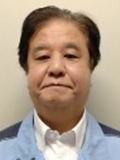 |
Current status and issues of business wastewater regulations
Tokyo Metropolitan Government Bureau of Sewerage Facilities Management Department, Drainage Equipment Section Deputy Section Manager (Section Affairs) Mr. Kenji Seki This presentation will introduce Tokyo's sewerage system and the current status of wastewater regulations for businesses in the 23 wards of Tokyo. It will also explain the status of provisional wastewater standards and the review of wastewater standards for hexavalent chromium currently being considered by the Ministry of the Environment.
|
| 14:30~15:15 | 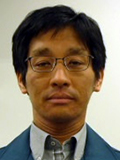 |
Reducing the environmental impact of wastewater by improving the plating process
Tokyo Metropolitan Industrial Technology Research Institute Research and Development Headquarters, Functional Chemical Materials Technology Department, Process Technology Group Principal Investigator Mr. Yasuhiko Takuma Coming Soon |
| 15:30~16:15 | 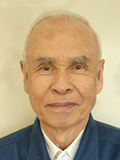 |
High-purity water manufacturing method
Technical Advisor, Nippon Wacon Mr. Yoroku Wada Coming Soon |
*Those who wish to use the textbook will need to pay an additional 2,000 yen
| Theme | Applications of DLC films and efforts to reduce friction |
|---|---|
| Date and Time | Thursday, February 2, 2023 |
| Venue | Tokyo Big Sight East Hall 5 Organized by Office Simultaneous online event (Zoom planned) |
| Organized by | Surface Finishing Association of Japan, Hetero-Interface Control Section |
| Support | The Surface Science Society of Japan, Japan Flux Growth Research Group, The Japanese Society for Crystal Growth, New Technology and New Materials Division, The Surface Finishing Association, High-performance Tribo-surface Processing Division |
| 13:35~14:20 |  |
Classification and applications of amorphous carbon films
Tokyo Institute of Technology Institute of Science and Technology Professor Mr. Naoto Otake DLC films have characteristics such as high hardness, high wear resistance, and low friction coefficient, and can be synthesized at low temperatures of about 200°C with a flat surface. Therefore, they are beginning to be widely used in electrical and electronic devices (hard disks, video tapes, integrated circuits, etc.), cutting tools (drills, end mills, razors, etc.), molds (optical parts, injection molding, etc.), automotive parts (piston rings, cam-related parts, clutch plates, injectors, etc.), optical parts (lenses, etc.), oxygen barrier films for PET bottles, sanitary equipment (faucets), lenses, windows, decorative items, etc. In particular, DLC films have excellent wear resistance and low friction coefficients due to their high hardness of over 10 GPa (sometimes 9 GPa) among various hard films, and their demand as protective films for automotive and mechanical parts is accelerating. In this presentation, we will focus on DLC, whose applications have been developed ahead of the clarification of its structure, and discuss its classification and standardization as a compass that shows which DLC should be applied to what applications.
|
| 14:20~15:05 |  |
Research on low-friction technology of DLC film in oil-less environment
Tokyo Metropolitan Industrial Technology Research Center Development Headquarters Functional Chemical Materials Technology Department Process Technology Group Principal Investigator Mr. Yuki Tokuda In recent years, various sliding parts have been required to be oil-free from the viewpoint of environmental burden caused by waste liquid of lubricating oil. Diamond-like carbon (DLC) films, in particular, show excellent friction characteristics in oil-free environments, and research is being conducted for their adoption in actual products. DLC films are mainly composed of carbon (and hydrogen), and are hard carbon thin films with an amorphous structure in which sp2 and sp3 bonds of carbon are mixed. The film properties of DLC films vary greatly depending on whether or not they contain hydrogen, and in oil-free environments, "hydrogen-containing DLC films" that contain hydrogen are actively used. In this presentation, we will report on the results of an investigation into the effects of pre-heating DLC films, surface texture addition, and the addition of chlorine to the film as methods to further reduce friction of hydrogen-containing DLC films.
|
| 15:15~16:00 | 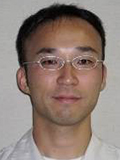 |
Friction characteristics of DLC coating film that vary depending on lubrication conditions and chemical structure of lubricant (tentative)
Kanagawa Prefectural Institute of Industrial Science and Technology Mechanical and Material Technology Department Principal Investigator Mr. Kentaro Yoshida Coming Soon |
*Those who wish to use the textbook will need to pay an additional 2,000 yen
| Date and Time | Friday, February 3, 2023 |
|---|---|
| Venue | Tokyo Big Sight East Hall 5 Organized by Office |
| Organized by | Surface Finishing Association of Japan, Light Metal Surface Finishing Division |
| 10:20~11:00 | 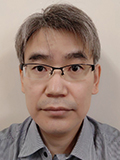 |
Magnesium surface treatment
Art 1 Co., Ltd. Development Department Technical Sales Deputy Director Mr. Kazuhito Nishinaka Coming Soon |
| 11:10~11:50 | 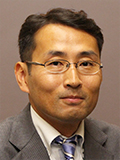 |
Introduction of the latest environmentally friendly and functional technologies in aluminum anodization
Okuno Chemical Industries Co., Ltd. General Technology Research Department, Fourth Research Laboratory Director Mr. Kenji Hara Coming Soon |
| 12:00~12:40 | 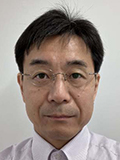 |
Development of aluminum alloys for lightweight automotive parts and their surface treatment
UACJ Corporation First Research Director Tadashi Minada Coming Soon |
※Materials are free of charge
| Theme | Wear test of electrolytic polishing and anodizing of titanium and stainless steel |
|---|---|
| Date and Time | Friday, February 3, 2023 |
| Venue | Tokyo Big Sight East Hall 5 Organized by Office |
| Organized by | Surface Finishing Society of Japan, Functionalization Committee for Anodic Oxide Films (ARS Committee) |
| 13:35~14:05 | 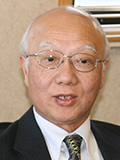 |
The technology of electrolytic polishing of titanium in industry.
Nakano Science Co., Ltd. Chairman and Representative Director Mr. Nobuo Nakano Titanium and titanium alloys are lightweight, strong, corrosion-resistant, and biocompatible, and are therefore expected to be used in equipment and materials in the chemical and medical industries. For this reason, in recent years, there has been an increasing demand for electrolytic polishing to create a smooth and shiny surface even for titanium materials with complex shapes. However, electrolytic polishing of titanium was very difficult due to the oxides on the surface, but this is gradually being resolved in recent years. We will explain the current situation.
|
| 14:15~14:45 | 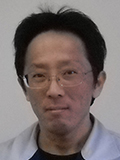 |
Surface characteristics of stainless steel electropolished by the wipe method.
Marui Plating Co., Ltd. Technology Department Mr. Takeshi Fujino Coming Soon |
| 14:55~15:25 | 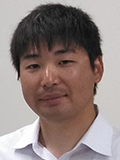 |
Cylindrical specimens using a reciprocating flat abrasion tester Wear characteristic evaluation of hard anodized aluminum Yamanashi Prefectural Industrial Technology Center Fuji Technology Support Center, Textile Technology Department Research Fellow Mr. Yuichiro Shiozawa Coming Soon |
| Date and Time | February 1st (Wednesday), 2nd (Thursday), 3rd (Friday), 2023 |
|---|---|
| Venue | Tokyo Big Sight Conference Tower 101 Meeting Room (Venue + online distribution) |
[Full schedule] Click here for the lecture program and registration
* Registration begins on Wednesday, December 15th
|
February 1 (Wednesday) 13:20~16:20 |
I'm glad I heard it, it was helpful to know Surface Treatment New Product and Technology Lecture Organized by the Technology Committee Participation fee: Free (Abstract book: 3,000 yen) |
|
February 2 (Thursday) 13:20~16:50 |
Environmental Seminar "Environmentally friendly chemicals, the latest wastewater treatment technology, and trends in overseas environmental regulations" Organized by by the Environmental Committee Participation fee: 6,000 yen (including textbook) |
|
Friday, February 3 13:20~16:50 |
It's too late to ask now!! Basics of plating and basics of equipment - 16th installment of the why-why series -
Organized by the Youth Association Participation fee: 6,000 yen (5,000 yen for the second person and onwards) |
Email newsletter distribution/
Direct mail
Click here to stop, change, or delete